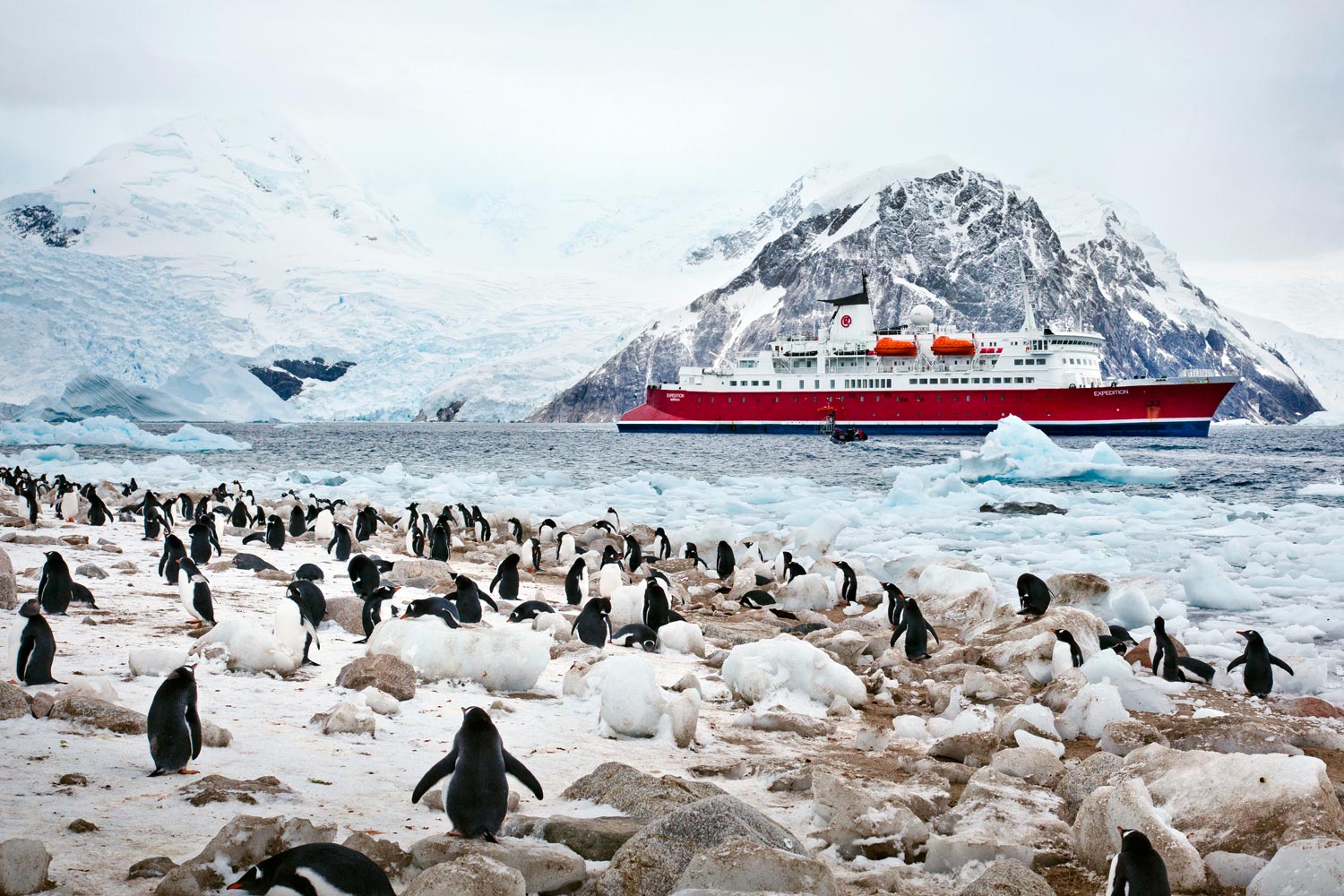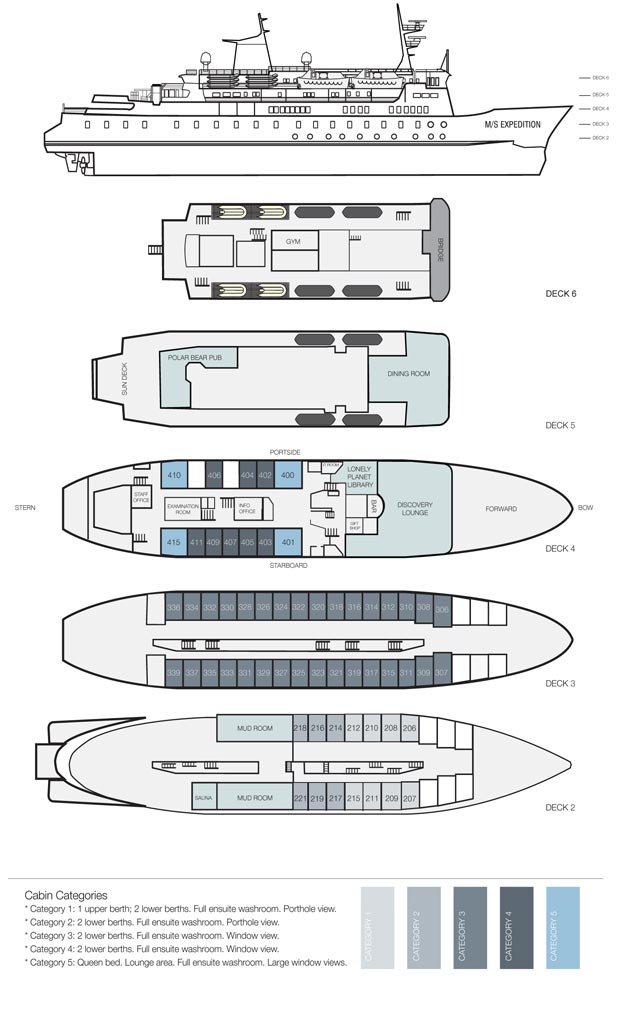Spirit of Shackleton: M/S Expedition
Antarctic Peninsula
Experience vast penguin rookeries and seal colonies on this awe-inspiring voyage to Antarctica, South Georgia, and the Falkland Islands. This 21-day voyage illuminates Ernest Shackleton’s legend and recounts his courageous exploration of Antarctica. You’ll visit historical sites of past explorers, as well as Shackleton’s final resting place – the wildlife-rich island of South Georgia. Antarctica is beyond comprehension and sure to amaze any traveller seeking a true adventure to the world’s most remote wilderness
- Meet hardy locals and spot unique wildlife in the Falkland Islands
- Explore abandoned whaling stations and visit Shackleton’s grave
- Walk quietly amongst king penguins and watching them surf onto the beach,
- Learn about the environment and ecology from industry experts
- Spot whales and seals while cruising past icebergs aboard Zodiacs
- Set foot on the continent of Antarctica
10% Sale
Stewart's Take
A long-awaited South Georgia voyage with the MS Expedition!
Overview
Experience vast penguin rookeries and seal colonies on this awe-inspiring voyage to Antarctica, South Georgia, and the Falkland Islands. This 21-day voyage illuminates Ernest Shackleton’s legend and recounts his courageous exploration of Antarctica. You’ll visit historical sites of past explorers, as well as Shackleton’s final resting place – the wildlife-rich island of South Georgia. Antarctica is beyond comprehension and sure to amaze any traveller seeking a true adventure to the world’s most remote wilderness.Scrolling is disabled on map, please click to enable.
EXPEDITION VESSEL: M/S EXPEDITION

The M/S Expedition provides an intimate small-ship cruising experience. Completely refurbished in 2009, she boasts spacious cabins, each featuring ocean-facing windows or portholes and private en-suite facilities. Large common areas and observation decks provide panoramic views of the distinctive landscapes of some of the world's most remote regions. The Expedition's spacious confines can hold as many as 140 passengers, but our commitment to keeping group sizes small means you'll never have to share it with more than 131 others. Many expedition cruise operators offer you a choice of space, comfort or expertise; the M/S Expedition delivers all three at a price few can top.

- 19 nights aboard the MS Expedition. Arrival transfer from airport in Ushuaia to hotel. 1 night accommodation with breakfast in Ushuaia. Zodiac excursions with our expert expedition team. Lectures and educational programs. Waterproof boots supplied for men's USA sized 8-14 & women's USA sized 3-9. Expedition Parka. Antarctica destination guide book.
- All meals included on board the MS Expedition. Breakfast included at the hotel.
- Twin-share hotel (1 nt), aboard the MS Expedition in quad-, triple-, twin-share cabins, or suites (all with en suite bathrooms and porthole or window). Please note that all cabins consist of twin-size berths and are ocean-facing. Suites have one queen-size bed.
- MS Expedition, Zodiac, private bus.
- One Expedition team member per 10 guests.

Tour Dossier
Spirit of Shackleton: M/S Expedition

This 21-day comprehensive itinerary with the M/S Expedition gives you all the major Antarctica highlights including amazing South Georgia
File Creation date: 2024-04-20 - for updated information and dates and prices see the following page:
http://expeditionsonline.com/tour/spirit-of-shackleton-ms-expedition_142

Spirit of Shackleton: M/S Expedition
Duration: 21 days
Location: Antarctic Peninsula
Available: November and January
Start: Ushuaia, Argentina
Finish: Ushuaia, Argentina

Highlights
- Meet hardy locals and spot unique wildlife in the Falkland Islands
- Explore abandoned whaling stations and visit Shackleton’s grave
- Walk quietly amongst king penguins and watching them surf onto the beach,
- Learn about the environment and ecology from industry experts
- Spot whales and seals while cruising past icebergs aboard Zodiacs
- Set foot on the continent of Antarctica

Itinerary
Experience vast penguin rookeries and seal colonies on this awe-inspiring voyage to Antarctica, South Georgia, and the Falkland Islands. This 21-day voyage illuminates Ernest Shackleton’s legend and recounts his courageous exploration of Antarctica. You’ll visit historical sites of past explorers, as well as Shackleton’s final resting place – the wildlife-rich island of South Georgia. Antarctica is beyond comprehension and sure to amaze any traveller seeking a true adventure to the world’s most remote wilderness





Ship Information
EXPEDITION VESSEL: M/S EXPEDITION

The M/S Expedition provides an intimate small-ship cruising experience. Completely refurbished in 2009, she boasts spacious cabins, each featuring ocean-facing windows or portholes and private en-suite facilities. Large common areas and observation decks provide panoramic views of the distinctive landscapes of some of the world's most remote regions. The Expedition's spacious confines can hold as many as 140 passengers, but our commitment to keeping group sizes small means you'll never have to share it with more than 131 others. Many expedition cruise operators offer you a choice of space, comfort or expertise; the M/S Expedition delivers all three at a price few can top.

Spirit of Shackleton: M/S Expedition
For the latest, up-to-date departure dates and prices please refer to the tour page:
http://expeditionsonline.com/tour/spirit-of-shackleton-ms-expedition_142
Included
- 19 nights aboard the MS Expedition. Arrival transfer from airport in Ushuaia to hotel. 1 night accommodation with breakfast in Ushuaia. Zodiac excursions with our expert expedition team. Lectures and educational programs. Waterproof boots supplied for men's USA sized 8-14 & women's USA sized 3-9. Expedition Parka. Antarctica destination guide book.
- All meals included on board the MS Expedition. Breakfast included at the hotel.
- Twin-share hotel (1 nt), aboard the MS Expedition in quad-, triple-, twin-share cabins, or suites (all with en suite bathrooms and porthole or window). Please note that all cabins consist of twin-size berths and are ocean-facing. Suites have one queen-size bed.
- MS Expedition, Zodiac, private bus.
- One Expedition team member per 10 guests.
Excluded
Flights to/from Ushuaia are not included in this tour.General Terms and Conditions
Expeditions Online Newsletter
Sign up to be an Expeditions Online insider and receive info on exclusive deals, discounts and more!